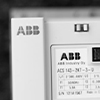What is the primary function of this part?
The primary function of the Phoenix Contact 2904610 is to serve as a high-performance QUINT POWER power supply unit for DIN rail mounting, providing reliable power to various industrial applications.
What are the input voltage specifications?
The input voltage range for the Phoenix Contact 2904610 is 100 V AC to 240 V AC and 110 V DC to 250 V DC, with a nominal input voltage range of 100 V AC to 240 V AC and 110 V DC to 250 V DC.
What is the output voltage and current of this power supply unit?
The Phoenix Contact 2904610 provides an output voltage of 48 V DC with a nominal output current of 5 A.
What are the dimensions of this power supply unit?
The dimensions of the Phoenix Contact 2904610 are 50 mm in width, 130 mm in height, and 125 mm in depth.
What type of protection does this power supply unit offer?
The Phoenix Contact 2904610 offers transient surge protection and includes a varistor and gas-filled surge arrester for protective circuitry.
Can this power supply unit be used in parallel or series configurations?
Yes, the Phoenix Contact 2904610 can be connected in parallel for redundancy and increased capacity, and it can also be connected in series.
What is the efficiency of this power supply unit?
The efficiency of the Phoenix Contact 2904610 is typically 92.3% at 120 V AC and 93.5% at 230 V AC.
What are the environmental operating conditions for this power supply unit?
The Phoenix Contact 2904610 operates within an ambient temperature range of -25 °C to 70 °C, with a derating of 2.5% per K above 60 °C. It also has a maximum permissible relative humidity of ≤ 95% at 25 °C, non-condensing.
What approvals and certifications does this power supply unit have?
The Phoenix Contact 2904610 has several approvals, including UL Listed, UL Recognized, cUL Recognized, cUL Listed, cULus Recognized, and cULus Listed.
What is the MTBF (Mean Time Between Failures) for this power supply unit?
The MTBF for the Phoenix Contact 2904610 is greater than 1,242,000 hours at 25 °C, 784,000 hours at 40 °C, and 374,000 hours at 60 °C.




 Based on over 4800 reviews
Based on over 4800 reviews









